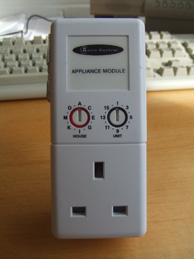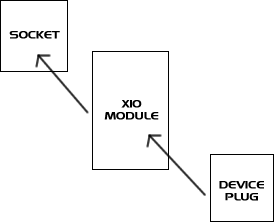Basic Principles Of X10
First we must understand the basic principles of X10.
X10 makes use of a communication protocol. By this we mean a set of rules that must be followed for communication between two devices to occur. This is very much like how the TCP/IP protocol controls the Internet.
X10 differs from other protocols because it works by carrying simple control signals over the existing wiring system found in all buildings. This means it does not need to have its own dedicated wiring such as a network cable or telephone lines.
The majority of houses are wired so that all power and lighting circuits originate from the same point, e.g. a power distribution box under the stairs. This allows an X10 control unit to send a signal through a socket in one area of the house such as the living room. This would then be broadcast via all the internal wiring. A receiver unit plugged in anywhere in the house can receive this signal. This means that controllers do not have to be wired directly to appliances.

This is a typical example of an X10 Module. The University of Stirling has a number of X10-enabled devices set up using X10 Modules and Controllers just like this.

To connect the module you just plug it into the socket and then plug the device you wish to operate into the module.


